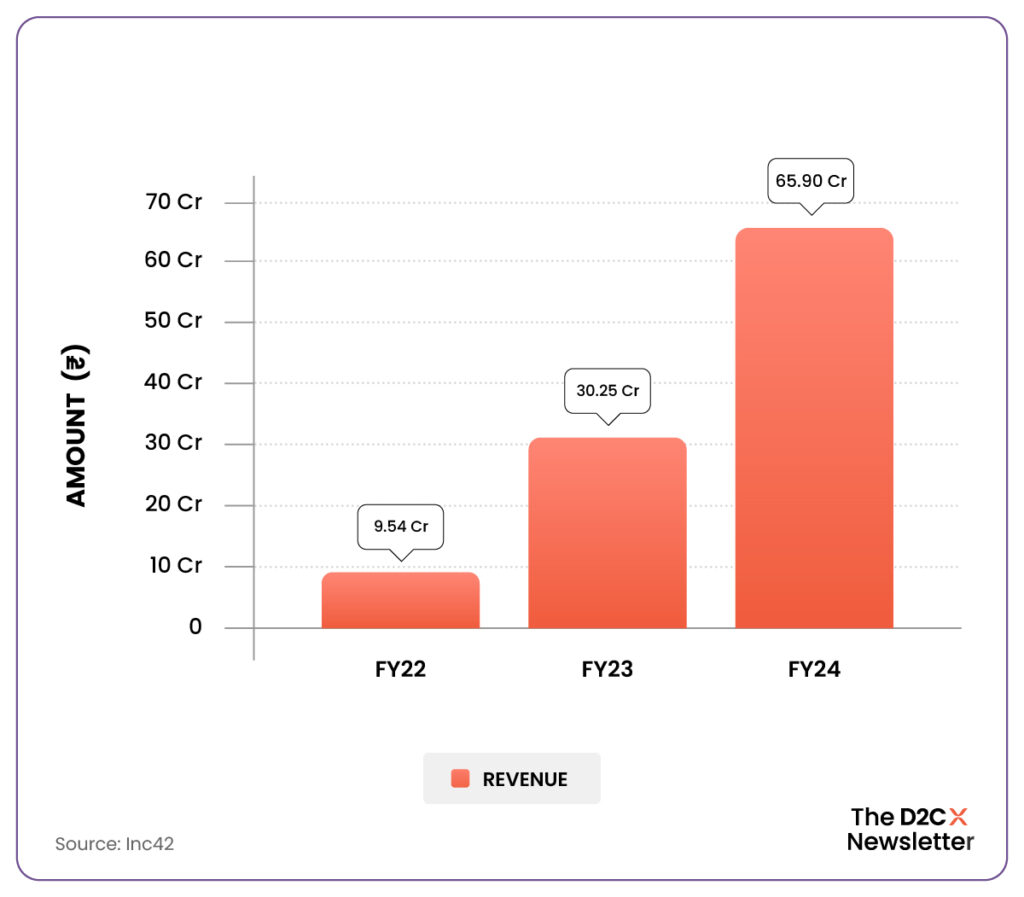Saket Dhankar was scrolling through Pinterest boards of modern homes when a thought struck him: why doesn’t this aesthetic exist for Indian bedrooms?
Fresh off 15 years of experience in fashion and design—including a stint as Fashion Director at Lakmé Fashion Week—he teamed up with Kanupriya Anand to launch a lifestyle brand that would change the face of Indian homes (and nurseries).
Enter Haus & Kinder.
Fast-forward to today, the brand boasts over a million customers, a fiercely loyal base of millennial moms, and a powerful brand identity that screams modern sophistication.
This is the story of how team Haus & Kinder built a sticky D2C business with one of the most underrated weapons in ecommerce: a loyalty engine that helps drive revenue, reduce CAC, and build trust in a category that’s typically price-sensitive and commoditised.
Let’s break it down.
The Loyalty Engine That Pays Dividends
Most D2C brands run point-based loyalty programs and call it a day. Haus & Kinder didn’t just build a program—they engineered habit loops.
They started with the basics: reward points on every purchase. But then layered it with two powerful mechanics:
💡 Coin Expiry With Purpose
Customers are awarded loyalty coins that expire in two months. Sounds harsh? Actually, it’s genius. Because those expiry reminders (sent via email and SMS) became conversion triggers.
Customers were nudged to return not just because they liked the products—but because they didn’t want to lose out on their earned value. FOMO became a sales channel.
Result? Redemption rates went up. Inactive users came back. Coins turned into conversions.
📬 Integration-First, Friction-Zero
Retention isn’t just about points. It’s about how easy you make the journey back.
Haus & Kinder integrated their loyalty stack into the entire customer experience. Their checkout flow allowed customers to redeem loyalty coupons seamlessly—without jumping through hoops.
No coupon hunting. No code copy-pasting.
That single frictionless moment at checkout? It made all the difference.
And on the communication front, integrations helped the brand automate reminders, reward nudges, and expiring coin alerts—delivered across email and WhatsApp.
In short: wherever the customer was, Haus & Kinder’s loyalty loop followed. Silently. Smartly.
70X ROI On Customer Loyalty. Read That Again 📈
For most D2C founders, retention is a nice-to-have. For Saket, it’s the spine of the brand.
Haus & Kinder saw a 70X ROI on their investment in retention tooling.
Yes, 70X.
It’s rare. But it’s a result of compounding three key things:
❇️ Timely coin expiry nudges
❇️ Automated reactivation workflows
❇️ Integrated reward redemption during checkout
And the best part? 12.4% of all customer signups now come through this system. That means the loyalty engine isn’t just retaining users—it’s acquiring new ones.
Because when a brand gives value back, customers become evangelists.
They refer. They rave. They return.
From Bedrooms to Baby Bags—Why Retention Matters More Than Ever
Haus & Kinder isn’t just a home decor brand. It’s a transition brand.
Think about their customer: a 29-year-old woman navigating pregnancy, baby prep, nesting, and nursery setup.
She discovers Haus & Kinder while shopping for muslin swaddles. Then comes back for cot bedding. Then fitted bedsheets. Then home linen. Then baby clothes. Then gifts.
In other words: she’s growing into the brand.
And Saket’s team designed every retention trigger to align with her life stage. Loyalty coins and expiry nudges became a tool to time reorders.
Product suggestions were tied to baby growth timelines. Repeat purchases weren’t “upsells”—they were expected milestones.
Retention wasn’t a number. It was a customer lifecycle.
💡How Haus & Kinder Banked On The Quiet Power of Predictability
Every D2C founder talks about predictability in revenue.
Haus & Kinder built it.
With their loyalty program humming in the background, the brand built strong purchase patterns across cohorts—so much so that 12-month LTV projections now drive their category expansion plans.
They know how long a mom takes to go from buying a swaddle to ordering a comforter.
They know when to nudge for a reorder.
They know which customer to not spend ads on.
In a world chasing new eyeballs, this retention machine helps Haus & Kinder double down on old customers—who are now worth more than ever.
What’s Next For Haus & Kinder? Loyalty As A Growth Flywheel 🎯
With ₹65.9 Cr revenue in FY24 and an aim to hit ₹500 Cr by FY26, Haus & Kinder knows that retention will do the heavy lifting.
But they’re not stopping at coins and coupons.
Here’s what they’re doing next:
✴️ Expanding into baby clothing and serveware categories using loyalty data
✴️ Using loyalty behaviour to personalise on-site experiences for returning users
✴️ Launching tier-based rewards for top customers, with early access to new launches
✴️ Using referral triggers to amplify LTV across family and friend circles
What started as a “program” has now become a brand moat.









.svg)
.svg)





